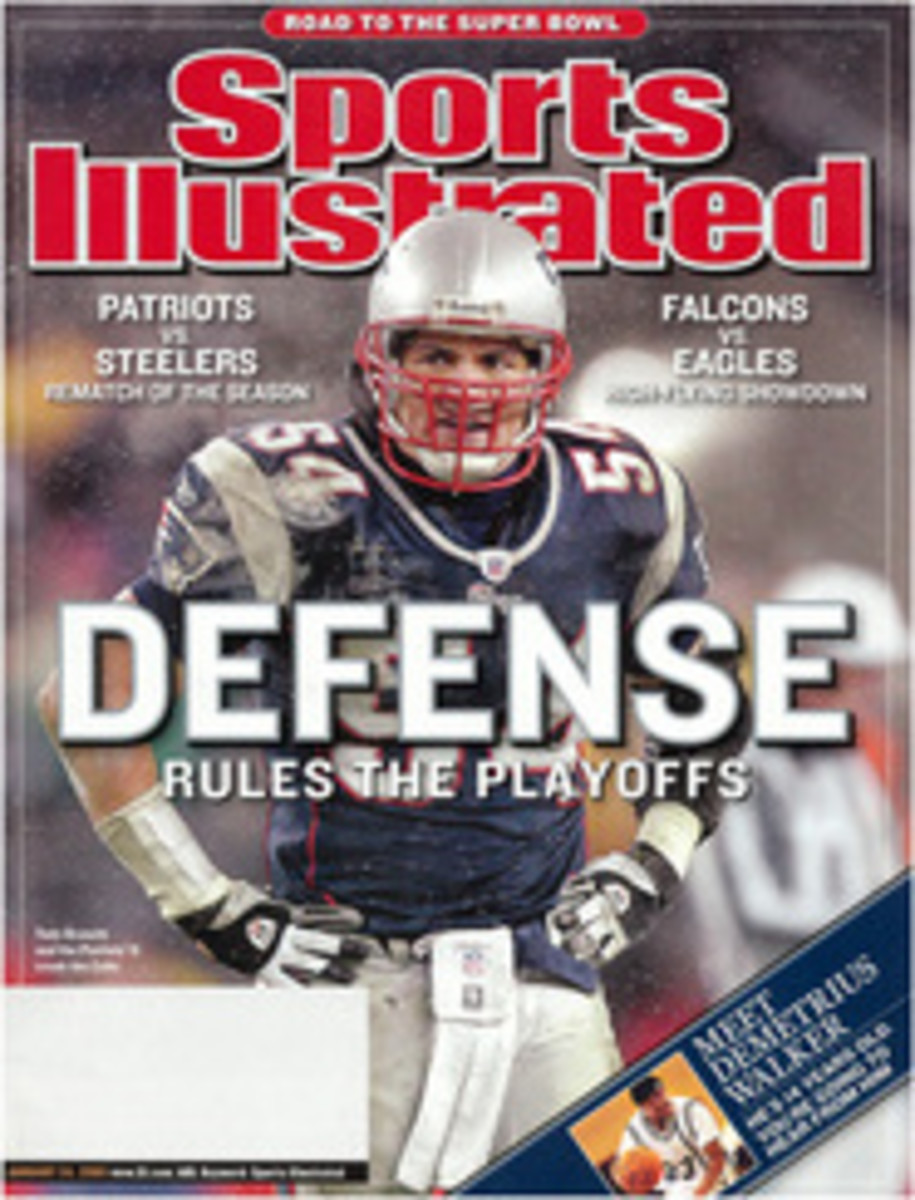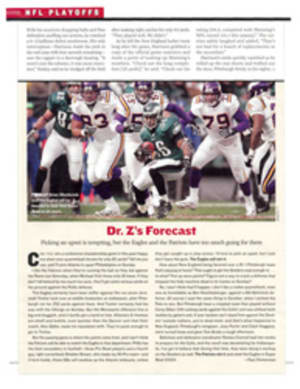
Junior Seau Balances Out
DOLPHINS LINEBACKER Junior Seau's season ended abruptly when he tore his right pectoral muscle in a Nov. 1 game against the Jets. Now, after having surgery, the 12-time Pro Bowler is planning to return for a 16th NFL season--though not before crossing paths with the Beast. That's Seau's nickname for Liba Placek, a 49-year-old, 138-pound mother of four who is the director of athletics at the Egoscue training clinic in Del Mar, Calif., near Seau's hometown of San Diego. The clinic focuses on postural exercises to enhance body alignment, and for six months of the year Placek is responsible for whupping Seau, 36, into shape. "Liba is such a stud," he says. "I'd rather face a 350-pound lineman than face Liba and one of her workouts. You know you're going to get your butt kicked. And she does the workout with you. That's the sickest part." Placek's workouts, which stress balance, posture and symmetrical muscle use, include running on logs in the Patch (a Navy SEALs-type training course) and sprinting 200 yards up what clients call Puke Hill. While Placek insists the hill running is not intended to make anyone sick, Seau says, "If you're out of shape, that hill will grab you, and you will throw up. About halfway up you start talking to a higher source." Then there are the sprints Seau does on a dirt course that covers five fairly steep 20- to 30-yard hills. He usually runs it while toting a man his own size or bigger on his back. "I've carried the Broncos' [220-pound safety] John Lynch and the Vikings' [298-pound tackle] Chris Hovan among others," says Seau, who before the 2004 season had missed only nine games. He also does some slightly less daunting exercises. Here are the staples of his routine.
1. ALL ABOARD!
The piggyback is used for three exercises
1. Stationary: squatting for one minute. Seau does two 60-second squats.
2. On sand: four 20-yard sprints at the beach.
3. Hills: running up and walking down the five hills on the dirt course near his training clinic. Once per session.
Says Placek: "Piggybacks are incredible for firing up Junior's hip flexors and his explosive gluteal and hamstring muscles. He does these exercises while keeping his upper back absolutely straight so that his spine is properly aligned. This translates to his being faster and hitting harder. Also, having someone [i.e., the piggybackee] pulling back on his shoulders opens up his chest, which optimizes the performance of his lungs and heart and also gives him a really good back extension."
2. FULL BRIDGE
Duration: one minute
Says Placek: "After doing sit-ups for his abs and hip flexors, it's important that Junior does a counterexercise like this one, which works the opposite muscle groups. Besides strengthening his spine, hips and wrists, it's forcing his mid and upper back to extend. This builds his shoulders in concert with other muscles, making his shoulders more able to withstand contact and less vulnerable to injury. Junior has focused so hard on his flexibility he is probably among the few NFL players who can do this exercise correctly."
3. MEDICINE BALL THROWS WHILE KNEELING ON A STABILITY BALL
Duration: one minute
Says Placek: "Junior catches and throws without falling over--this really improves balance because you're forced to find stability on an uneven surface. The exercise works core postural muscles [those that contribute to the angle of the spine] as well as legs and arms. It is essential to have proper posture with an extended spine before starting this. If not, the exercise becomes counterproductive: You develop one side of the body at the expense of the other."
4. TWISTING CRUNCHES WITH MEDICINE BALL
Duration: one minute
Says Placek: "Junior, holding a 10-to-20-pound ball, brings his chin toward his knees while twisting to one side, alternating sides each time. Football requires hips and upper body to be in sync, and this encourages that. It works hip flexors, back extensors and obliques. These muscles are needed to change direction efficiently or, really, for any movement he does on the field."
OCTOPUS AND ICE CREAM: WHAT HE EATS
FOR BREAKFAST I have a plain egg-white omelet (three eggs) and bottled water. For lunch, a piece of grilled or seared fish with white rice or a bowl of chicken-and-rice soup. And water. I drink water all day long, during the season and when I'm training. For dinner I want real sushi--not the Americanized kind. My parents are American Samoan so I don't go for any of those rolls. I'll have raw prawn or sea urchin or octopus. I love it. Fortunately enough places in Miami and San Diego have that stuff on the menu to keep me satisfied. My favorite treat? A vanilla, soft-serve ice cream in a plain cone. Pure and simple.
COLOR PHOTO
KIRBY LEE/WIREIMAGE.COM (SEAU ACTION)
FOUR COLOR PHOTOS
Photographs by Nick Cardillicchio
COLOR PHOTO
EIICHI ONODERA/EMI KIMATA/GETTY IMAGES (SUSHI)
COLOR PHOTO

